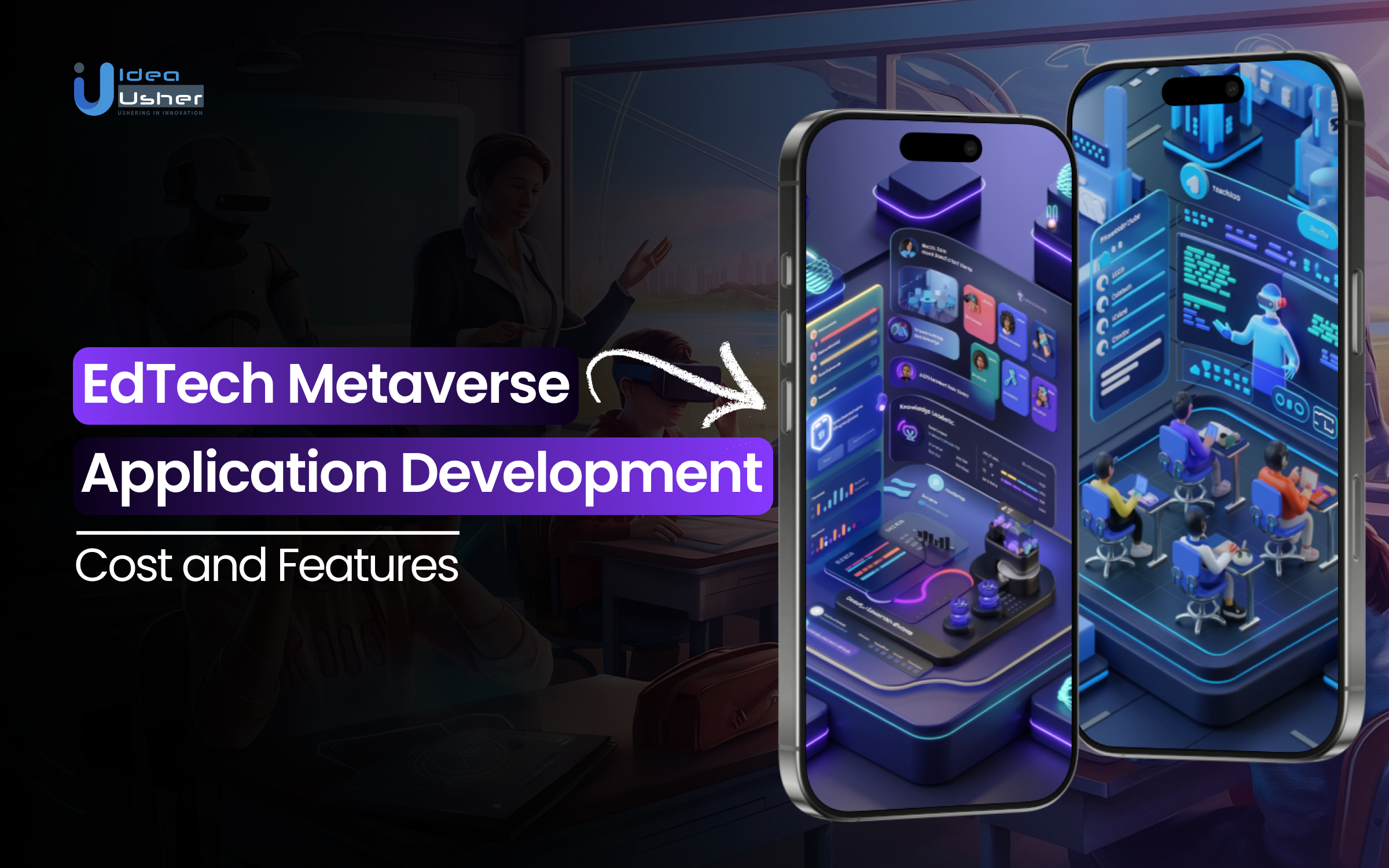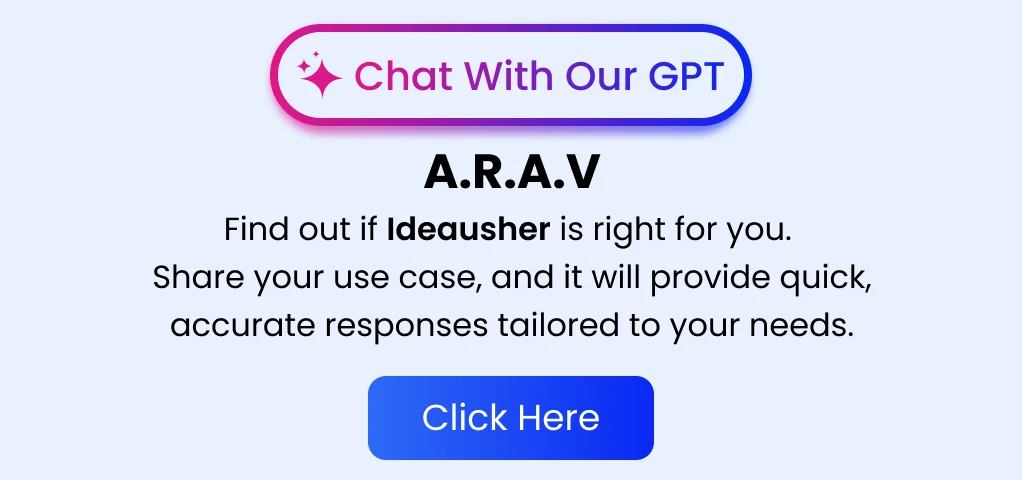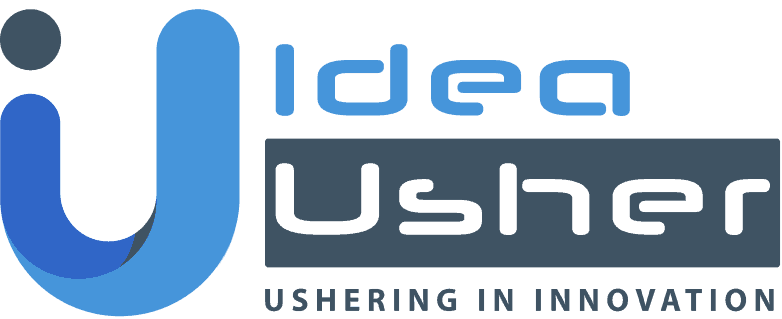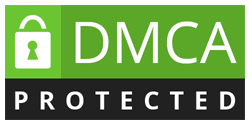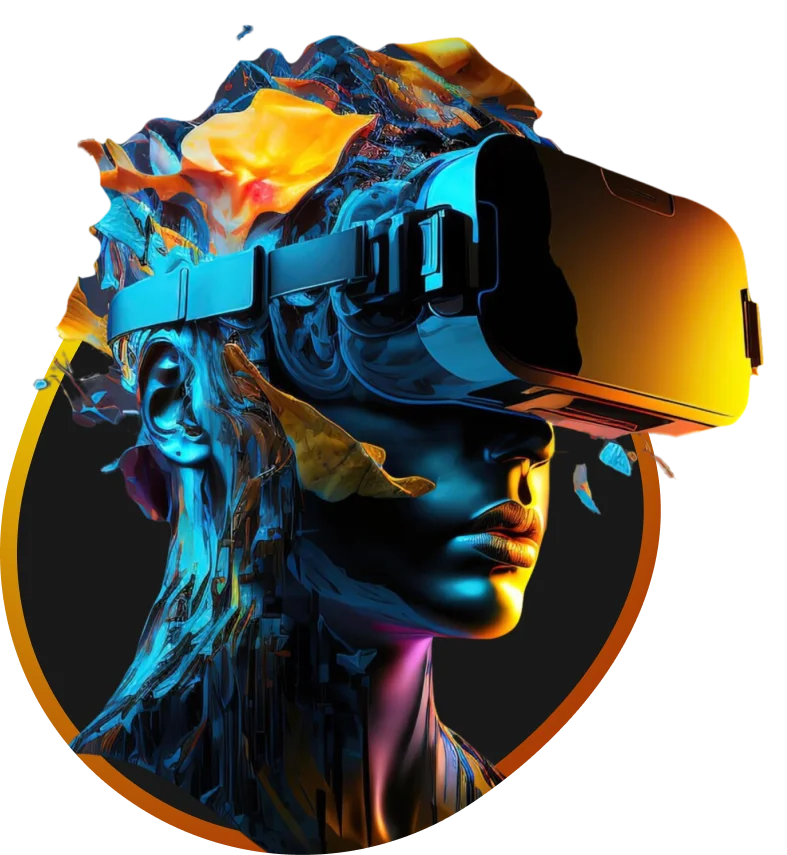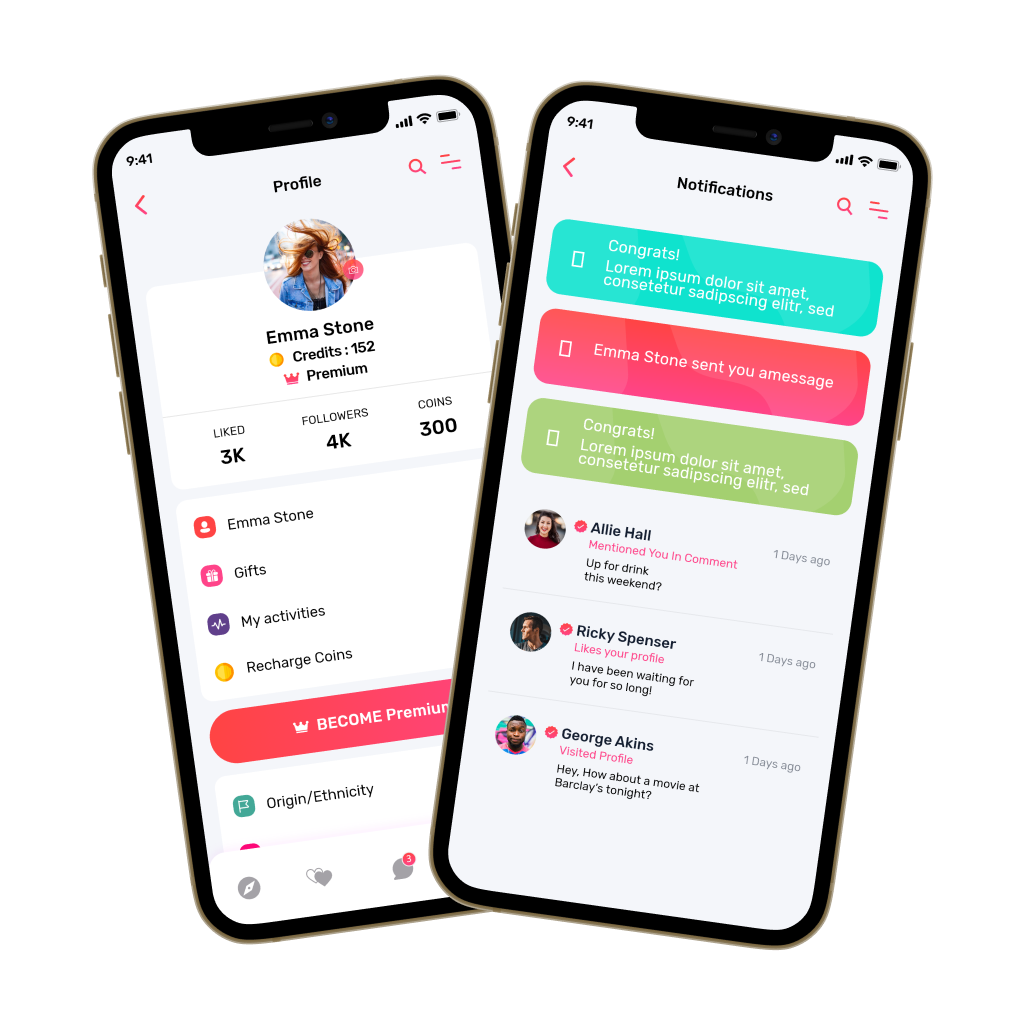The concept of the Metaverse is rapidly transforming the way we perceive digital experiences, especially in the educational sector. This immersive virtual world is becoming a powerful tool to enhance teaching and learning experiences. For educational institutions, building an EdTech Metaverse Application offers the potential to revolutionize traditional classroom settings, making education more interactive, engaging, and accessible. According to studies, the global education technology market is expected to reach $404 billion by 2025, with virtual and augmented reality solutions playing a significant role in this growth.
Several educational institutions are already using Metaverse technologies to enhance learning and create new revenue streams.
For example, The University of Maryland’s “Virtual Reality for Education” program, offering virtual campus tours and immersive learning, helped increase enrollments by 10%, contributing an additional $5 million in tuition revenue.
Similarly, Georgia Tech boosted its online education revenue by 20%, adding around $10 million to its revenue in the past two years by creating interactive virtual classrooms and labs, which significantly improved student outcomes and engagement.
The Metaverse is changing the educational landscape, making learning more engaging and accessible. This blog will guide you through the steps of developing an EdTech Metaverse application, helping institutions harness this technology to revolutionize education. Let’s explore how you can get started!
Key Market Takeaways for EdTech Metaverse Application
Source: GrandViewResearch
This shift is driven by the need for innovative learning experiences, where virtual environments offer new ways to engage students beyond the traditional classroom setup. It’s an exciting time for schools and universities to explore the possibilities of immersive education.
More and more educational institutions are hopping on the Metaverse bandwagon because it brings a fresh, interactive approach to learning. Virtual campuses, digital simulations, and hands-on experiences make learning feel more real and engaging. For example, the University of Tokyo has invested millions to create virtual labs for engineering students, and Stanford University has even built a virtual campus for remote learners.
The ability to experiment and collaborate in a virtual world is something that traditional classrooms simply can’t offer.
Big names in tech are also partnering up with schools to push the Metaverse forward. Meta has teamed up with over 100 universities to create immersive learning spaces, while Microsoft and Nvidia are helping institutions develop cutting-edge virtual classrooms.
Work with Ex-MAANG developers to build next-gen apps schedule your consultation now
A Perfect Time to Invest in EdTech Metaverse Application Development
Investing in EdTech metaverse application development is an exciting and smart move for educational institutions looking to stay relevant in today’s fast-evolving tech landscape. The metaverse, with its immersive and interactive environments, provides a whole new way to engage students. Imagine offering virtual classrooms, simulations, or gamified lessons that make learning more exciting and impactful.
By developing these types of applications, educational institutions can create a more engaging and personalized learning experience, improving student participation and retention. Plus, it gives them a competitive edge in attracting students who are keen on tech-driven education.
Take Purdue University, for instance. They created their “Purdue Virtual Campus” in the metaverse, allowing students to attend classes, access resources, and participate in campus activities virtually.
This not only enhanced the student experience but also led to a 15% increase in international student enrollment, contributing an estimated $10 million in additional revenue.
The financial upside is also significant. By offering virtual tours, premium content, and certification programs, schools can tap into new revenue streams while saving on physical infrastructure costs. Purdue, for example, saw a 20% boost in online enrollments, adding an additional $5 million in revenue. These numbers prove that EdTech metaverse applications are a smart, profitable investment for the future of education.
Key Advantages of the Metaverse in EdTech
The Metaverse is changing education by offering fun, interactive, and accessible learning experiences. It uses technologies like VR and AR to create exciting learning environments. Here are some key benefits of the metaverse in EdTech,
1. Experiential Learning Environments
The Metaverse provides a platform for hands-on learning, enabling students to engage with content interactively. For instance, students can explore the solar system or conduct virtual science experiments that would be difficult or impossible in a traditional classroom setting. A great example is University College London, which has been integrating VR into its curriculum for architecture students to simulate building designs.
2. Collaborative Interaction and Synergy
The Metaverse fosters dynamic learning environments where students can collaborate on projects in real-time, irrespective of their physical location. For example, students can perform virtual surgeries or work on engineering simulations, enhancing their teamwork and cooperative skills. The University of Illinois has been utilizing the Metaverse for virtual medical training, where students collaborate in shared virtual spaces to perform medical procedures.
3. Simulated Real-World Scenarios
Students can participate in immersive simulations that mimic real-world scenarios, such as historical events or scientific processes. These simulations offer students a risk-free environment to experiment and develop critical thinking skills, learning from their mistakes without real-world consequences. For example, medical students at Johns Hopkins University practice complex surgeries in a virtual setting before performing them on actual patients.
4. Adaptive Learning Pathways
The Metaverse enables personalized educational journeys that cater to individual learning preferences and needs. Educators can design tailored virtual environments where students progress at their own pace, an approach that is especially beneficial for students with varying learning styles. For instance, The University of Southern California uses VR to facilitate personalized learning experiences.
5. Game-Based Learning Integration
The inclusion of game mechanics in educational environments increases student engagement and motivation. The Metaverse allows educators to design learning experiences that incorporate challenges, rewards, and interactive tasks. For example, The University of Florida has incorporated gamified learning modules, where students earn incentives by completing virtual tasks.
Development Steps for EdTech Metaverse Application
Here are the steps to develop an edtech metaverse application,
1. Define the Educational Objectives
The development process begins with identifying the core educational goals of the EdTech Metaverse application. Understanding the target audience, curriculum requirements, and learning methodologies helps shape the platform’s features and functionalities.
2. Select the Right Technology Stack
Choosing the appropriate technology stack ensures a seamless and immersive learning experience. Key technologies include VR, AR, AI, blockchain for secure data storage, and cloud computing for scalability.
3. Develop 3D Virtual Learning Environments
Creating interactive and visually appealing 3D learning environments is essential. Using advanced 3D modeling and rendering technologies, developers can build virtual classrooms, science labs, and historical simulations that enhance engagement.
4. Implement Avatar and User Customization Features
Students and educators should be able to create and personalize their avatars for immersive interaction. Customization options, such as virtual clothing, facial expressions, and gestures, improve user engagement and personal connection to the learning space.
5. Integrate AI-Powered Adaptive Learning
Artificial intelligence enhances personalization by analyzing student progress and providing tailored content. AI-driven tutors, chatbots, and recommendation systems help learners receive individualized support and adaptive assessments.
6. Ensure Blockchain-Based Security and Data Management
Blockchain technology plays a crucial role in securing student data, tracking learning progress, and managing digital certifications. Decentralized ledgers ensure transparency and reliability in record-keeping.
7. Develop Gamification and Interactive Learning Modules
Incorporating gamification elements, such as quizzes, leaderboards, badges, and challenges, keeps learners motivated. Interactive learning modules, including AR-enhanced textbooks and VR simulations, make complex concepts easier to understand.
8. Optimize for Cross-Platform Compatibility
An effective EdTech Metaverse application must work across multiple devices, including VR headsets, tablets, desktops, and mobile phones. Ensuring smooth synchronization and accessibility enhances usability for a broader audience.
9. Conduct User Testing and Continuous Improvement
Before launching, extensive user testing ensures a seamless learning experience. Gathering feedback from educators and students helps refine the platform. Regular updates and improvements keep the application aligned with evolving educational needs.
Cost of Developing an EdTech Metaverse Application
| Development Stage | Cost Percentage | Estimated Cost ($) | Details |
| Research and Planning | 5% – 10% | $500 – $10,000 | Market research, competitor analysis, feature prioritization, scope definition, learning objectives. |
| Market Research | – | $200 – $2,000 | Identifying target audience, analyzing competitors. |
| Concept Development | – | $300 – $8,000 | Defining the application’s scope and unique value proposition. |
| Design | 10% – 20% | $1,000 – $20,000 | Creating UI/UX, 3D environments, and avatars. |
| UI/UX Design | – | $500 – $10,000 | Wireframes, mockups, and prototypes for intuitive navigation. |
| World Design | – | $500 – $10,000 | Designing 3D classrooms, interactive spaces, and assets. |
| Avatar Design | – | $200 – $5,000 per avatar | Customizable avatars with different appearances and expressions. |
| Development | 50% – 70% | $5,000 – $70,000 | Frontend and backend development, app features, integrations. |
| Frontend Development | – | $2,000 – $30,000 | UI implementation, 3D model integration, animations. |
| Backend Development | – | $2,000 – $30,000 | Server-side logic, user management, data storage. |
| Basic Features | – | $1,000 – $10,000 | Virtual classrooms, basic avatar customization. |
| Advanced Features | – | $5,000 – $50,000 per feature | AI-powered tutoring, gamification, interactive simulations. |
| Metaverse Integration | – | $500 – $5,000 | Connecting with a metaverse platform if applicable. |
| API Development | – | $500 – $5,000 | Integrating external services and databases. |
| Testing & Quality Assurance | 10% – 15% | $1,000 – $15,000 | Functional, usability, performance, and security testing. |
| Functional Testing | – | $500 – $7,500 | Verifying core application features. |
| Usability Testing | – | $300 – $5,000 | Ensuring user-friendly interactions. |
| Performance Testing | – | $200 – $2,500 | Checking performance across different conditions. |
| Security Testing | – | $200 – $2,500 | Identifying and resolving security vulnerabilities. |
| Deployment & Launch | 5% – 10% | $500 – $10,000 | Application release and marketing. |
| Platform Deployment | – | $200 – $5,000 | Preparing the app for web, VR, or mobile. |
| Marketing & Promotion | – | $300 – $5,000 | Advertising, outreach, and promotional strategies. |
Total Estimated Cost: $10,000 – $100,000
Factors Affecting the Development Cost of EdTech Metaverse Application
Several variable factors can significantly influence the overall development cost of any software project, and EdTech metaverse applications are no exception.
- 3D World Design and Realism: Creating highly detailed and immersive virtual environments requires specialized 3D artists and more development time, significantly impacting cost. The level of realism desired directly correlates with expense.
- Avatar Customization: Offering diverse avatar options and customization features adds complexity to design and development, especially if facial expressions and body language are incorporated.
- Interactive Learning Content Development: Creating engaging educational content tailored for the metaverse environment, including simulations, games, and interactive exercises, requires subject matter experts and specialized development skills, adding to content creation costs.
- Integration with Learning Management Systems: Seamless integration with existing LMS platforms for tracking progress, assignments, and grades adds a layer of technical complexity and potential development expense.
Top 5 Education Institutions Using EdTech Metaverse Applications
Several top educational institutions are utilizing EdTech metaverse applications to enhance learning and drive revenue growth. These innovations are offering new ways to engage students and expand global reach. Here are five leading examples:
1. University of Illinois at Urbana-Champaign
The University of Illinois has embraced the metaverse through a partnership with an EdTech company to develop a virtual campus that allows prospective students to take interactive tours, attend classes, and engage with faculty in a fully immersive environment. This digital transformation has expanded their reach, attracting international students who can explore the campus remotely before deciding to enroll. As a result, the university saw a 10% increase in international applications, translating to an additional $15 million in tuition revenue from global students.
2. Purdue University
Purdue University launched its “Purdue Virtual Campus,” an immersive platform that lets students attend classes, access campus resources, and participate in extracurricular activities virtually. This move has proven successful, with the university reporting a 20% increase in online program enrollments, which generated an additional $5 million in revenue. Purdue’s virtual campus offers a wide range of features, including virtual lab environments, academic advising, and even virtual student clubs.
3. University of Tokyo
The University of Tokyo is set to launch a Metaverse School of Engineering in September, aimed at fostering digital technology talent and encouraging more young women to pursue careers in engineering and IT. Open to the public, the virtual school will offer lectures, laboratory tours, and events, allowing participants from around the world, including junior and senior high school students, to join. The university plans to attract over 100,000 participants and promote entrepreneurship and digital skills.
4. Georgia Tech
Georgia Tech has developed a metaverse-based platform called “The Immersive Learning Platform,” where students can engage in hands-on learning through virtual labs, interactive courses, and real-world simulations. This platform has proven to be a hit among students enrolled in STEM fields, allowing them to gain practical skills without the need for expensive physical equipment. The university has reported a 30% increase in enrollments for its online STEM programs, generating an additional $8 million in revenue.
5. University of Maryland
The University of Maryland has created a “Virtual Reality and Augmented Reality Center” within its engineering school, where students can engage in 3D simulations of real-world engineering challenges. These immersive learning experiences are integrated into courses, especially in STEM fields, allowing students to work with virtual prototypes and simulations of complex systems. The center has led to a 10% increase in enrollments for its VR-related programs, and the university is looking to monetize VR courses and corporate partnerships, contributing new revenue streams.
Conclusion
Developing EdTech metaverse applications is becoming essential for schools and universities that want to engage students with fun, immersive, and interactive learning experiences. By building a metaverse app, schools can offer virtual field trips, simulated labs, gamified lessons, and personalized learning environments, helping students grasp concepts more deeply and remember them better. This innovative approach not only improves education quality but also creates new opportunities for revenue, like premium features, virtual events, and partnerships. It’s a great way for institutions to stay ahead in the world of educational technology while attracting more students.
Looking to Develop an EdTech Metaverse Application?
At Idea Usher, we specialize in creating immersive and interactive educational experiences that captivate and engage students. With over 500,000 hours of coding expertise, we are equipped to bring your vision to life, whether it’s virtual field trips, gamified lessons, or personalized learning environments. Our team will help you design and build a cutting-edge metaverse app that enhances education, boosts student engagement, and opens up new revenue opportunities. Let us help you lead the way in EdTech innovation!
Work with Ex-MAANG developers to build next-gen apps schedule your consultation now
FAQs
Q1: How to develop an EdTech metaverse application?
A1: To develop an EdTech metaverse application, you’ll begin by collaborating with experts in VR/AR, 3D design, and educational content. Start by defining the core educational goals, whether it’s virtual classrooms, interactive labs, or gamified lessons. Next, choose the right platform to build the virtual environment, ensuring smooth navigation and user experience. The application should include interactive elements like avatars, multimedia content, assessments, and the ability for real-time collaboration.
Q2: What are the features of an EdTech metaverse application?
A2: An EdTech metaverse application includes immersive 3D environments, customizable avatars, and interactive learning spaces such as virtual classrooms or labs. Features typically involve live sessions, quizzes, group activities, and gamified elements to keep students engaged. It may also offer virtual field trips, project collaborations, and real-time progress tracking. Communication features like voice or video chat allow for seamless interaction between students and instructors.
Q3: What is the cost of developing an EdTech metaverse application?
A3: The cost of developing an EdTech metaverse application depends on the complexity of the platform and its features. A basic application could be more affordable, while advanced platforms with 3D environments, AI features, and custom content will require a larger investment. Costs also depend on the expertise of the development team and the ongoing expenses for maintenance, updates, and server hosting.
Q4: What are the benefits of developing an EdTech metaverse application?
A4: Developing an EdTech metaverse application brings numerous benefits, such as offering immersive and engaging learning experiences that increase student participation and retention. It allows for greater accessibility, enabling students to join from anywhere, and opens doors for global reach. The platform can reduce the need for physical infrastructure, while offering new revenue opportunities through virtual courses, certifications, and premium content, making it a long-term investment with high potential returns.
